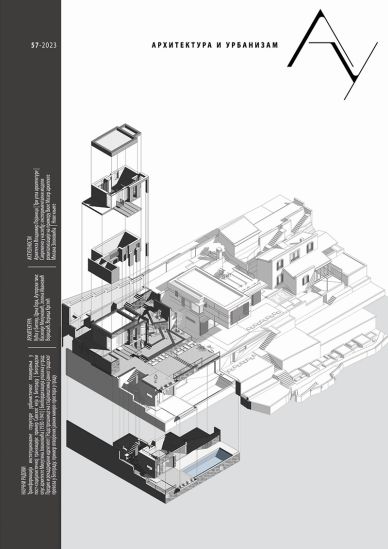The billboardization of the city entrances: landscape and reframed identity
Abstract
The paper investigates the billboardization of the entrance to the city and the impact of this phenomenon on the integrity of the city and its cultural identity. The initial hypothesis is that the accumulation of billboards within city entrances creates visual pollution that causes multiple problems regarding the city's culture, especially when it is located in a protected area. The paper strives to indicate the neglect of this space in the current urbanistic and socio-cultural narrative, and point out the newly formed region of reframed identity through the concept of the image of the city. The research moves through a case study of the Adriatic highway, the Jaz - Kotor section, namely the buffer zone of the protected Natural and Culturo-Historical Region of Kotor, in Montenegro. The aim of the paper is to point out the image of the city and to emphasize this urban space as a factor that disrupts the cultural identity of Kotor.
References
Baudrillard, J. 1994. Simulacra and Simulation. Ann Arbor: University of Michigan Press.
Carlson, A. 2000. Aesthetics and the Environment: The Appreciation of Nature, Art and Architecture. London: Routledge.
Castells, M. 2010. The Power of Identity. 2nd ed. Malden: Wiley-Blackwell.
Cullen, G. 1971. The Concise Townscape. Oxford: Elsevier.
Eko, U. 1973. Kultura, informacija, komunikacija. Beograd: Nolit.
Ermischer, G. 2003. Mental landscape. Landscape as idea and concept. Proceedings of the second meeting of the Workshop for the implementation of the European Landscape Convention. Strasbourg: Council of Europe.
Geerz, C. 1977. The Interpretation of Cultures. New York: Basic Books.
Gregory, D., Johnston, R. Pratt, G. Watts, M. Whatmore, S. (Eds.). 2009. The Dictionary of Human Geography (5th ed.). Oxford: Wiley-Blackwell.
Hall, S. 1997. Representation: Cultural representations and signifying practices. London: Sage Publications & Open University.
Kaplan, S., Kaplan, R. 1989. The Experience of Nature: A Psychological Perspective. Cambridge: Cambridge University Press.
Kim, H. Stepchenkova, S. 2016. Understanding destination personality through visitors' experience: A cross-cultural perspective. Journal of Destination Marketing & Management. 6(4), 416−425.
Koolhaas, R. 2002. Junkspace. October, 100, 175–190.
Koolhaas, R., Foster, H. 2013. Junkspace with Running Room. Devon: Notting Hill Editions Ltd.
Lapka, M., Cudlinova, E., Rikkon, S., Maxa, J. 2001. Intergrating nature, culture and society: The concept of landscape field. Ekológia (Bratislava), 20, 125−138.
Leach, N. 1999. The Anaesthetics of Architecture. Cambridge: The MIT Press.
Lefebvre, H. 1991. The Production of Space. Oxford: Basil Blackwell Ltd.
Lester, P. M. 1995. Visual Communication: Images with Messages. Belmont: Wadsworth Publishing Company.
Lynch, K. 1960. The Image of the City. Cambridge: The MIT Press.
Ministarstvo kulture Crne Gore. 2011. Menadžment Plan Prirodnog i kulturno-istorijskog područja Kotora. s.n.
Mumford, L. 1961. The City in History: Its Origins, Its Transformations, and Its Prospects. New York: Harcourt Brace Jovanovich.
Mumford, L. 1970. The Culture of Cities. New York: Harcourt Brace Jovanovich.
Nasar, J. L. 1994. Urban design aesthetics: The evaluative qualities of building exteriors. Environment and Behavior, 26(3), 377−401.
Ogilvy, D. 1985. Ogilvy on Advertising. New York: Random House Inc.
Palang H., Fry G. (eds). 2003. Landscape Interfaces. Cultural heritage in Changing Landscapes. Dordrecht: Springer Science+Business Media.
Porteous, J. D. 1996. Environmental aesthetics: Ideas, politics and planning. London: Routledge.
Proshansky, H. M., Fabian, A. K., & Kaminoff, R. (1983). Place-identity: Physical world socialization of the self. Journal of Environmental Psychology, 3, 57–83.
Relph, E. 1976. Place and placelessness. London: Pion Limited.
Said, E. 1993. Culture and Imperialism. New York: Vintage Books.
Saito, Y. 2007. Everyday Aesthetics. New York: Oxford University Press.
Scannell, L., Gifford, R. 2010. Defining place attachment: A tripartite organizing framework. Journal of Environmental Psychology, 30(1), 1−10.
Schama, S. 1995. Landscape and Memory. New York: Vintage Books.
Stedman, R. 2003. Is it really just a social construction? The contribution of the physical environment to sense of place. Society & Natural Resources, 16(8), 671−685.
Stedman, R. 2002. Toward a social psychology of place. Environment and Behavior, 34, 561–581.
Službeni list Crne Gore. 066/18. Pravilnik o bližem sadržaju studije zaštite kulturnih dobara.
Službeni list Crne Gore. 043/18. Pravilnik o bližim uslovima za postavljanje odnosno građenje privremenih objekata, uređaja i opreme.
Službeni list Crne Gore. 064/17, 044/18, 063/18, 011/19, 082/20. Zakon o planiranju prostora i izgradnji objekata.
Službeni list Crne Gore. 056/13, 013/18, 067/19. Zakon o zaštiti Prirodnog i Kulturno-istorijskog podrucja Kotora.
Službeni list Crne Gore. 49/10. Zakon o zaštiti kulturnih dobara.
Tuan, Y. F. 1990. Topophilia: A study of environmental perception, attitudes, and values. New York: Columbia University Press.
Venturi, R., Brown, D. S., Izenour, S. 1977. Learning from Las Vegas. The forgotten symbolism of architectural form. Cambridge: The MIT Press.
Copyright (c) 2023 Arhitektura i urbanizam

This work is licensed under a Creative Commons Attribution-ShareAlike 4.0 International License.

